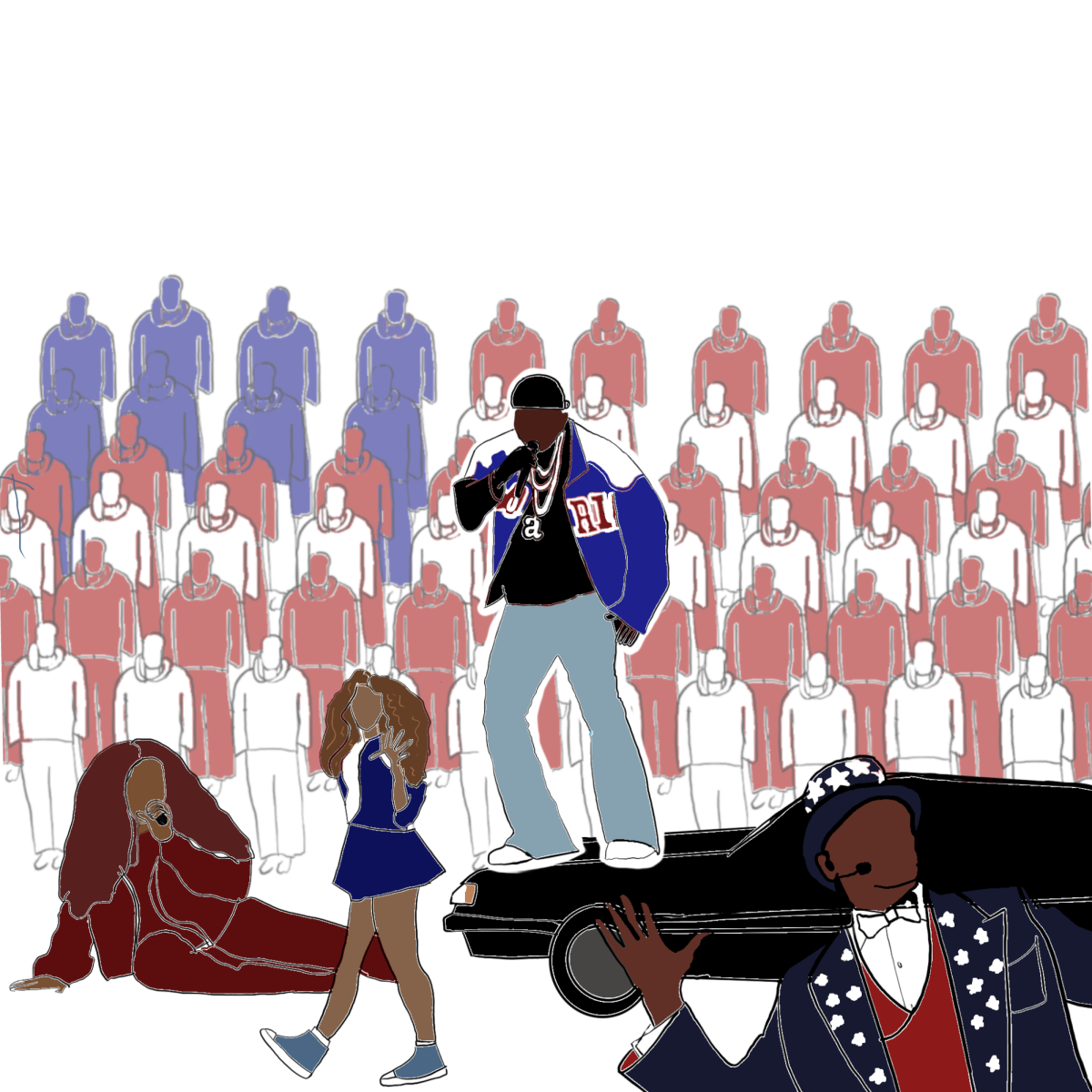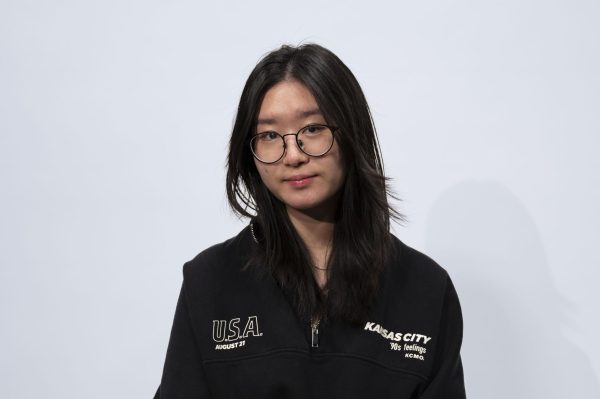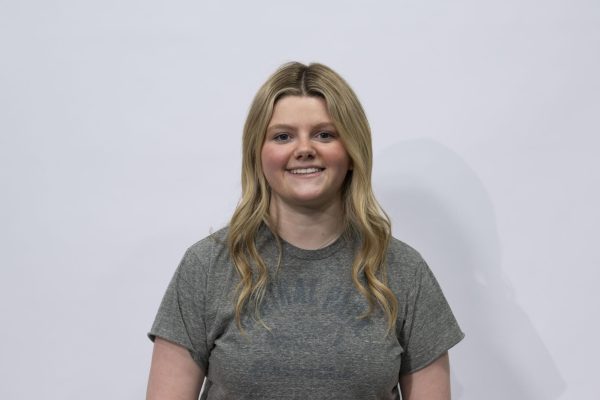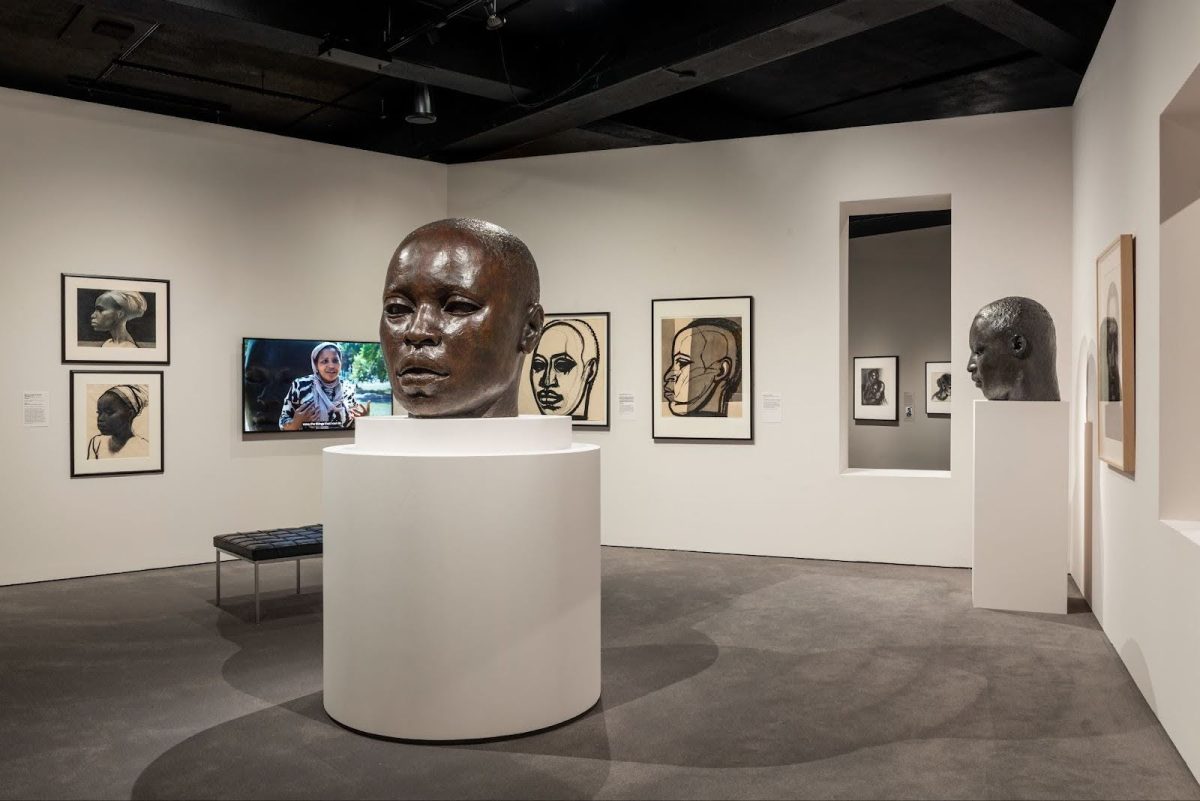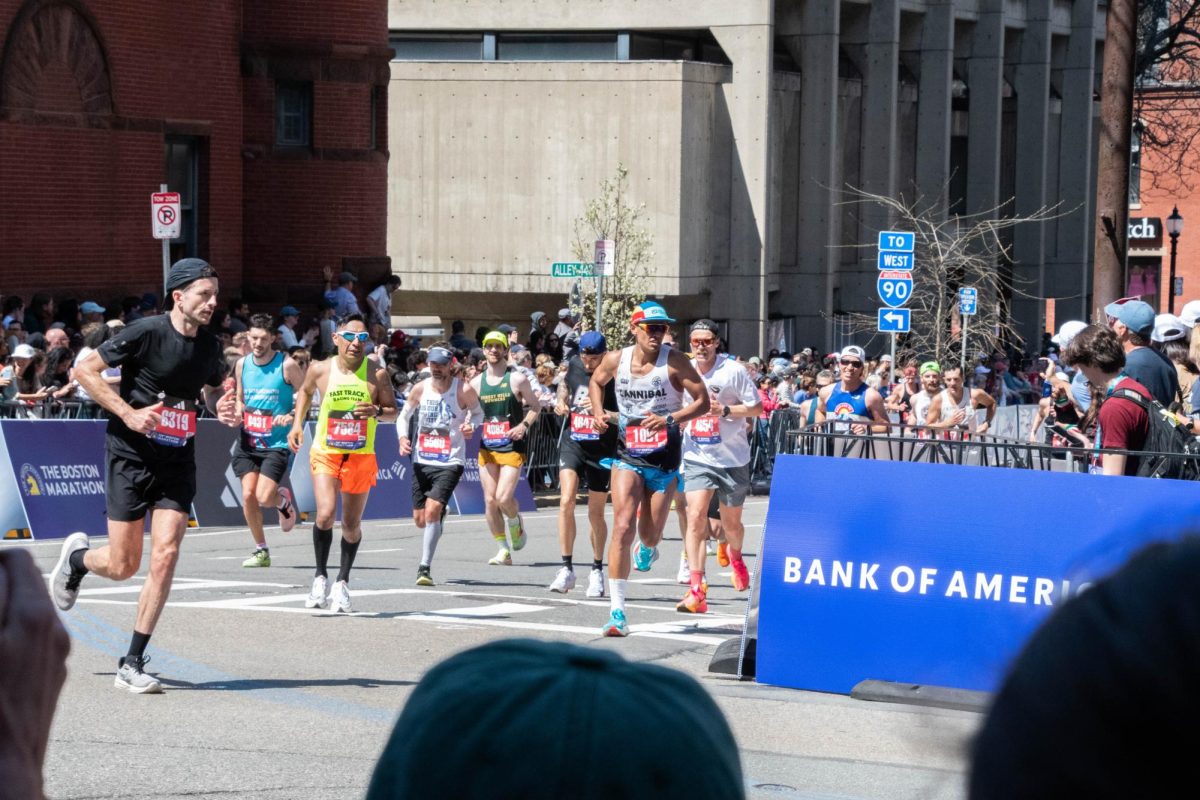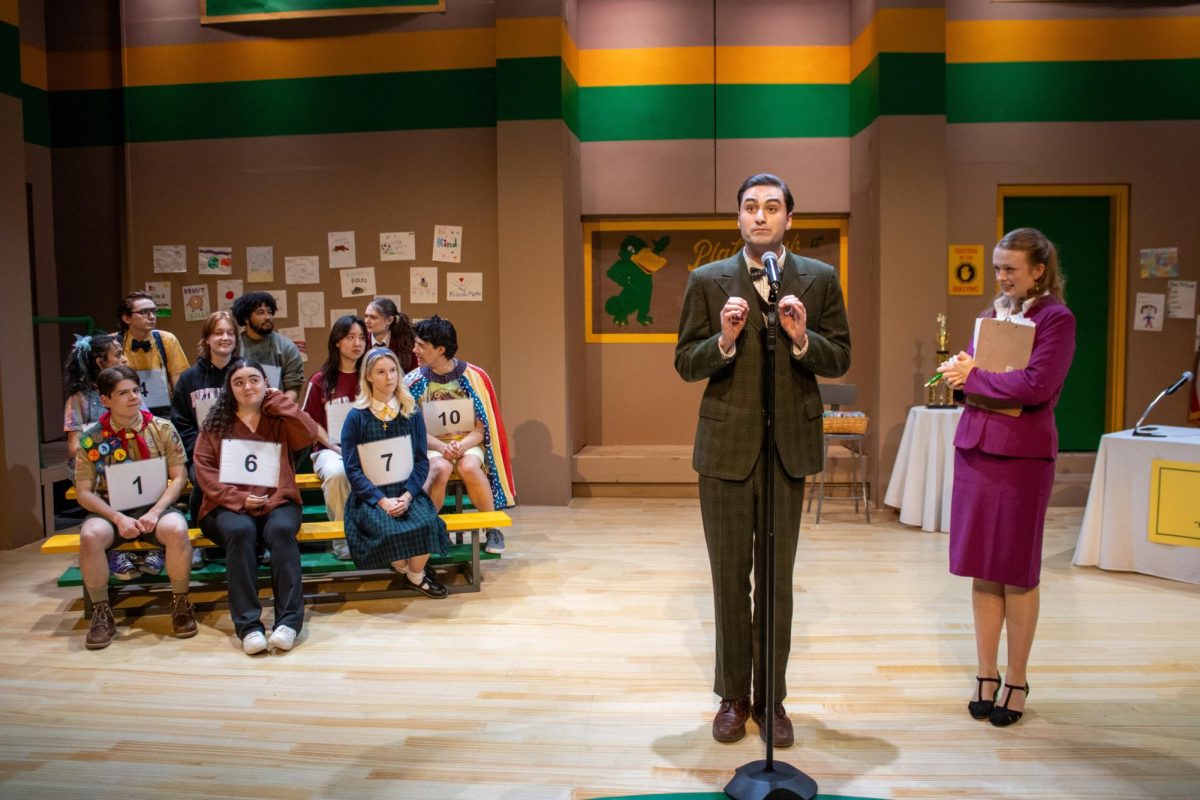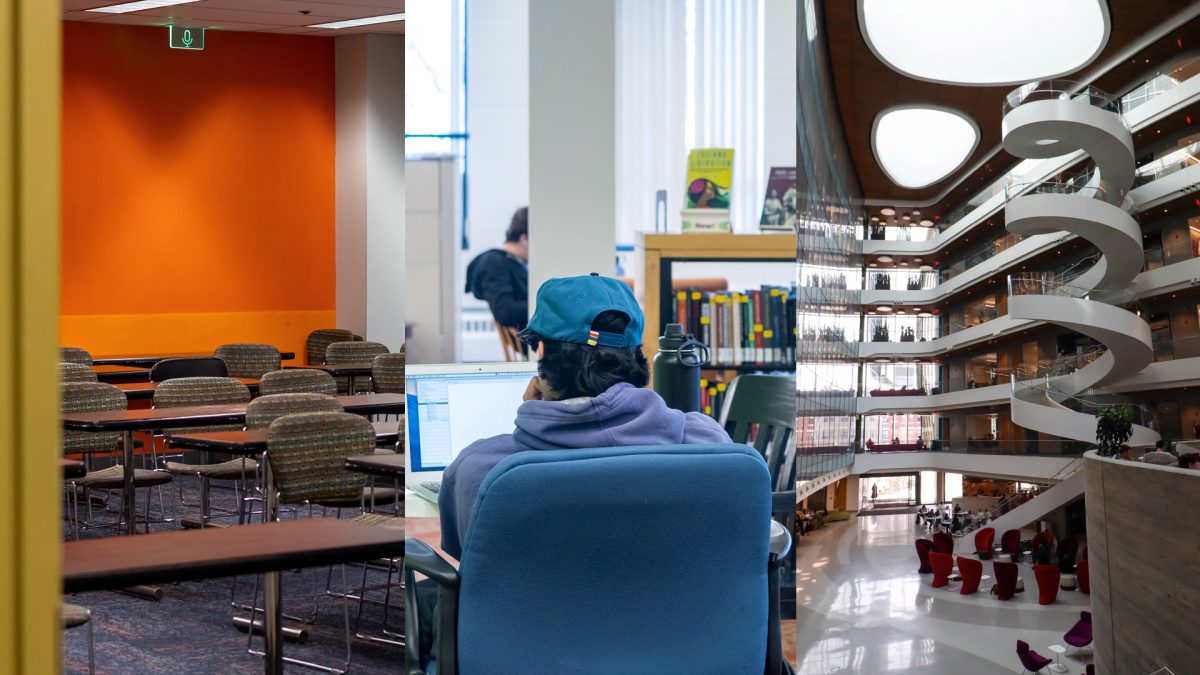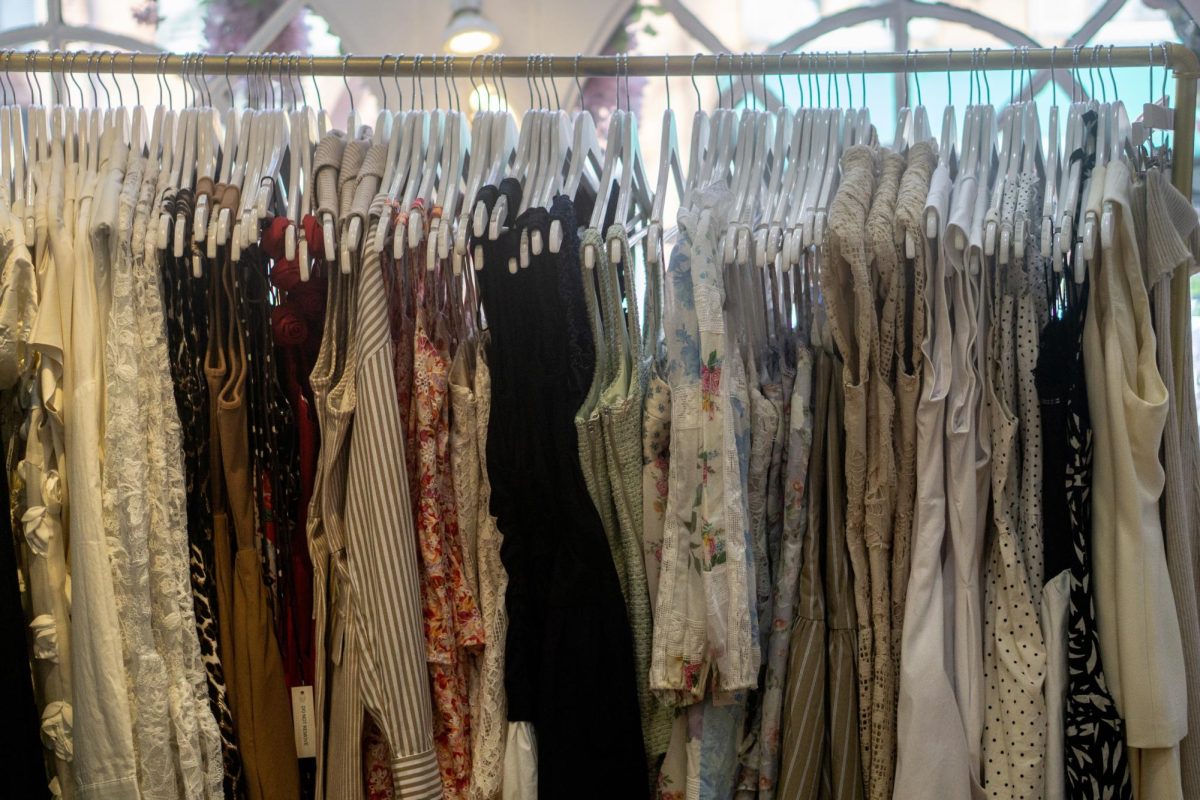Kendrick Lamar became the first solo rapper to headline the Super Bowl halftime show Feb. 9. With 133.5 million viewers, he not only drew a larger audience than the actual game — which had 126 million — but made history as the most-watched halftime show of all time.
The Super Bowl halftime show is one of the most-watched televised events in the United States and is watched worldwide even by those with no interest in American football. It was on this stage where Lamar gave not just an incredible performance but a powerful statement on the country’s current political state, in line with his reputation of using music as a means for activism.
From the beginning, the performance had a layered meaning, starting with actor Samuel L. Jackson. He introduced himself by saying, “It’s your Uncle Sam, and this is the great American game,” referring not just to football but the real “American game” — the lives of the American people.
The character of Uncle Sam is a personification of the U.S. government and a symbol of patriotism often used in political cartoons and posters for propaganda. Coupled with Jackson’s role in the film “Django Unchained,” where he portrayed a slave who supports his master’s racism and profits off the system that oppresses his entire race, Jackson’s portrayal of Uncle Sam became an allegory for Black people in positions of power, symbolizing the complexities of oppression within institutions.
As he stood atop the hood of a black Buick GNX, Lamar announced, “The revolution about to be televised; you picked the right time but the wrong guy,” a revision of GilScott-Heron’s 1971 recording, “The Revolution Will Not Be Televised.”
Lamar proceeded to perform “squabble up,” a song that focuses on his resilience and critiques the music industry’s inauthenticity. As Uncle Sam, Jackson said, the song was “too loud, too reckless, too ghetto. Mr. Lamar, do you really know how to play the game? Then tighten up,” alluding to the censorship of Black voices to fit mainstream media and standards.
Immediately after, Lamar performed “Humble,” where he stood between two groups of backup dancers dressed in red, white and blue. They came together to form a fractured American flag, symbolizing the nation’s current racial and political divisions.
Jackson appeared again after performances of “DNA.,” “euphoria” and “man at the garden,” calling Lamar and his group of Black male dancers a “culture cheat code,” hinting at the exploitation and appropriation of Black artistry by industries that do not properly credit its origins. Jackson then asked the “score-keepers” to “deduct one life,” alluding to the consequences for one’s career when being too radical or outspoken and thus not adhering to the “acceptable” versions of Black culture.
On a lighter note, Lamar cheekily referenced his drama with rapper Drake after “peekaboo,” saying, “I want to perform their favorite song, but you know they love to sue,” before playing a short audio clip from “Not Like Us,” referencing Drake’s lawsuit against Universal Music Group for defamation and harassment stemming from the song.
Lamar brought on stage Grammy-winning artist SZA to perform “luther,” which brought a calmer vibe to a performance otherwise defined by assertive themes and high-energy delivery.
This was a deliberate decision, made clear by Jackson, who said, “That’s what America wants — nice and calm.” He then said, “You’re almost there, don’t mess this—” before being interrupted by the soundtrack for “Not Like Us.” Even the backup dancers asked Lamar, “You really about to do it?” to which he responded, “Forty acres and a mule, this is bigger than the music,” referencing Union Gen. William T. Sherman’s Special Field Order No. 15, which promised but never granted reparations to Black families following the abolishment of slavery.
Lamar finally performed the long-awaited “Not Like Us,” humorously avoiding eye contact with the camera until he said, “Say, Drake, I hear you like ’em young,” which caused a frenzy on social media.
“THIS MAN KENDRICK LAMAR JUST SMILED IN THE CAMERA AFTER COOKING DRAKE,” one user commented on an X post which got 15.6 million views and 325,000 likes.
Retired tennis legend Serena Williams even made a cameo during “Not Like Us,” crip-walking while wearing a tennis skirt. Though her airtime was short, both Williams and viewers were excited, and her dance hinted at the hate she received for doing the dance in the 2012 London Olympics after she was accused of glamorizing gang violence. This only further emphasized the message that pervaded Lamar’s performance about the censorship of Black culture.
Coincidentally, both SZA and Williams were speculated to be Drake’s exes, leading fans to speculate that their appearances were also subtle jabs at him. They weren’t the only cameos though, as DJ and record producer Mustard, who also produced “Not Like Us,” was brought in during “tv off” with Lamar screaming his name, a moment which became a meme when the song was first released.
The halftime show ended with Lamar having performed a total of 11 songs, his lyricism bolstered by his multifaceted performance and demonstrating his masterful storytelling.



